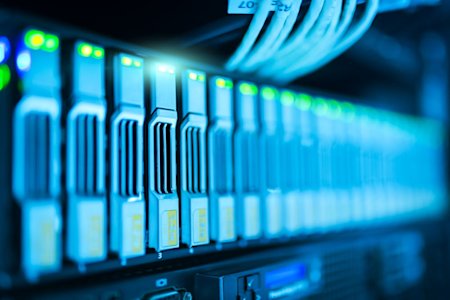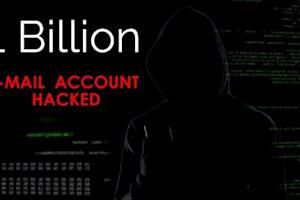In today’s rapidly evolving digital landscape, cybersecurity is a critical concern for businesses of all sizes. The increasing complexity of cyber threats and strict regulatory requirements demand robust security measures. SIEM has become an essential tool in this fight.
SIEM solutions provide comprehensive visibility into IT environments by aggregating, analyzing, and correlating data from multiple sources, enabling organizations to detect and respond to threats in real-time.
But what exactly is SIEM, and why is it so vital in today’s cybersecurity strategies? This blog explores the meaning, functionality, and importance of SIEM, exploring its key features, use cases, and how businesses can leverage it to enhance their security posture.
SIEM Meaning and Definition
Security information and event management (SIEM) is a cybersecurity solution that provides real-time analysis of security alerts generated by applications and network hardware. SIEM systems collect, normalize, and analyze data from various sources, such as firewalls, antivirus software, and intrusion detection systems. SIEM allows organizations to monitor and manage their security landscape from a single platform by centralizing this data.
SIEM combines two primary functions: Security Information Management (SIM) and Security Event Management (SEM). SIM involves the long-term storage and analysis of log data, helping to identify patterns and trends crucial for forensic investigations and compliance. SEM focuses on real-time monitoring and event correlation, enabling immediate detection of anomalies and potential security breaches.
Together, these components provide a holistic view of an organization’s security posture, helping to identify threats as they occur and prevent future incidents. SIEM's dual capability of real-time threat detection and historical analysis makes it a cornerstone of modern cybersecurity frameworks, essential for protecting sensitive data and maintaining compliance.
How Does SIEM Work?
SIEM systems collect and analyze data from various sources within an organization's IT infrastructure. This process involves several key steps to provide comprehensive security monitoring and threat detection.
Data Collection: SIEM solutions gather data from diverse sources, including network devices, servers, applications, and endpoints. This data includes logs, security events, and alerts, all of which are crucial for understanding the security landscape.
Normalization: Once collected, the data undergoes normalization, a process that standardizes data formats so that different types of data can be compared and analyzed together. This step ensures that the SIEM system can effectively correlate data from various sources, regardless of their original formats.
Correlation: The normalized data is then analyzed to identify relationships between different events. SIEM systems use predefined rules, machine learning, and advanced analytics to correlate these events, detecting patterns that may indicate a security threat. For instance, multiple failed login attempts followed by a successful login could signal a potential breach.
Real-Time Monitoring and Alerting: SIEM systems continuously monitor the IT environment, comparing incoming data against correlation rules and threat intelligence feeds. When suspicious behavior is detected, the system generates alerts prioritized by threat severity, enabling security teams to respond quickly.
Incident Response and Reporting: SIEM systems provide detailed information about detected threats, including the affected systems and potential impacts. This information is crucial for investigating incidents and taking corrective action. SIEM also supports compliance by generating reports that demonstrate adherence to regulatory requirements, such as GDPR and HIPAA.
Comparing SIEM and Security Automation Tools
As cybersecurity threats evolve, organizations rely on various security tools to enhance threat detection and response. While SIEM plays a central role in log management and event correlation, other security solutions offer complementary capabilities. Here’s how SIEM compares to different security automation tools:
SIEM vs. SOAR
Security Orchestration, Automation, and Response (SOAR) extends SIEM by automating responses to security incidents. While SIEM collects and analyzes security logs, SOAR integrates with various security tools to execute predefined responses, reducing manual intervention. SIEM is best for monitoring and compliance, whereas SOAR enhances automated threat response.
SIEM vs. XDR
Extended Detection and Response (XDR) provides a more integrated approach to threat detection by consolidating security data from multiple sources, including endpoints, networks, and cloud environments. Unlike SIEM, which focuses on log aggregation, XDR offers deeper security insights with built-in analytics and automated response capabilities.
SIEM vs. EDR & MDR
Endpoint Detection and Response (EDR) and Managed Detection and Response (MDR) focus on endpoint security, identifying and mitigating threats at the device level. While SIEM provides broader security visibility across an organization’s IT environment, EDR specializes in endpoint-based attacks, and MDR adds an outsourced security team for continuous monitoring and response.
Choosing the right security solution depends on business needs. Many organizations use SIEM alongside tools like SOAR, XDR, and EDR to strengthen their cybersecurity defenses.
How SIEM Enhances Your Business: Key Benefits Explained
In an increasingly sophisticated era of cyber threats, businesses must adopt advanced security measures to protect their data and operations. SIEM is a crucial tool that offers several key benefits for organizations of all sizes:
Real-Time Threat Detection and Response: SIEM systems continuously monitor your IT environment, allowing for immediate detection of suspicious activities and potential security breaches. This real-time visibility enables security teams to respond swiftly, minimizing damage and reducing the window of opportunity for attackers.
Comprehensive Visibility Across the IT Infrastructure: SIEM provides a unified view of your entire IT infrastructure by aggregating data from various sources, such as networks, servers, and endpoints. This comprehensive visibility is essential for understanding your organization’s security posture and identifying vulnerabilities before they can be exploited.
Enhanced Incident Response and Forensic Analysis: When a security incident occurs, SIEM systems not only alert you but also provide detailed information about the incident, including its origin, scope, and potential impact. This information is invaluable for conducting forensic analysis, determining the root cause, and preventing future incidents.
Regulatory Compliance and Reporting: Many industries are subject to stringent regulatory requirements, such as GDPR, HIPAA, and PCI DSS. SIEM helps organizations meet these obligations by providing the necessary tools for monitoring, logging, and reporting security events. Automated reports generated by SIEM systems can demonstrate compliance, reducing the risk of penalties.
Proactive Risk Management: SIEM allows businesses to adopt a proactive approach to risk management by identifying potential threats before they escalate. By analyzing patterns and correlating data, SIEM systems can alert you to emerging risks, enabling you to strengthen defenses in advance.
By implementing SIEM, businesses can enhance their security posture, protect sensitive data, and maintain compliance in an increasingly complex threat landscape.
SIEM Use Cases: Strengthening Cybersecurity
Threat Detection and Incident Response: SIEM analyzes security logs to identify potential cyber threats, allowing IT teams to respond swiftly to breaches or anomalies.
Insider Threat Monitoring: Detects suspicious activity from employees, contractors, or compromised accounts by analyzing behavioral patterns.
Regulatory Compliance: Helps businesses meet industry regulations such as GDPR, HIPAA, and SOC 2 by maintaining detailed security logs and audit trails.
Advanced Threat Hunting: Security teams can proactively search for hidden threats using SIEM’s analytics and correlation capabilities.
Cloud and Hybrid Security Management: Provides visibility into multi-cloud and on-premise environments, ensuring secure access and threat detection across all infrastructures.
Common Challenges of SIEM
While SIEM provides powerful security insights, organizations often face challenges in implementing and maintaining these systems effectively. Here are some common challenges:
High Volume of Alerts & False Positives: SIEM generates large numbers of security alerts, many of which may be false positives, overwhelming security teams and leading to alert fatigue.
Complex Deployment & Management: Setting up and managing a SIEM system requires expertise, as it involves configuring log sources, correlation rules, and incident response workflows.
Scalability Issues: As businesses grow, handling increased log data and event processing can strain SIEM performance, requiring additional resources and infrastructure.
Integration with Other Security Tools: SIEM must work seamlessly with other security solutions like SOAR, XDR, and EDR, but integration challenges can hinder its effectiveness.
Long Investigation & Response Times: While SIEM provides visibility into threats, investigating and responding to incidents can be time-consuming without automation and efficient workflows.
Effective SIEM Implementation: Best Practices for Improved Security
Implementing a SIEM solution is a crucial step in enhancing your organization’s cybersecurity. To maximize the effectiveness of SIEM, it’s important to follow best practices that ensure proper configuration, maintenance, and utilization. Here are some key best practices for successful SIEM implementation:
Define Clear Objectives: Before deploying a SIEM solution, establish clear objectives based on your organization’s specific security needs. Determine what you aim to achieve, such as real-time threat detection, compliance management, or improved incident response. Clear goals guide the configuration and use of your SIEM system.
Start with a Phased Approach: Implement SIEM in phases, beginning with monitoring critical systems and high-risk areas. Gradually expand coverage as your team becomes familiar with the system. This approach helps manage the complexity of SIEM implementation and ensures proper setup before scaling.
Optimize Correlation Rules: Regularly review and optimize SIEM’s correlation rules to reduce false positives and improve detection accuracy. Tailor the rules to reflect your organization’s environment and evolving threat landscape.
Incorporate Threat Intelligence: Enhance SIEM’s capabilities by integrating external threat intelligence feeds. This integration allows SIEM to detect emerging threats and correlate them with internal data, providing a more comprehensive security view.
Provide Ongoing Training: Ensure your security team is well-trained in using the SIEM system. Regular training helps the team stay updated on the latest features and best practices, ensuring they can effectively manage and respond to security incidents.
By following these best practices, organizations can fully leverage the power of SIEM to strengthen their security posture.
The Future of SIEM: Emerging Trends & Innovations for Stronger Security
As cybersecurity threats evolve, so does the technology used to combat them. The future of SIEM is shaped by several key trends and innovations:
AI and Machine Learning Integration: SIEM solutions are increasingly incorporating artificial intelligence (AI) and machine learning (ML) to enhance threat detection. These technologies enable SIEM systems to identify complex patterns and anomalies more accurately, reducing false positives and improving response times.
Cloud-Native SIEM Solutions: With the shift to cloud-based environments, cloud-native SIEM solutions are becoming more prevalent. These solutions offer scalability, flexibility, and seamless integration with cloud services, making them ideal for modern, distributed IT infrastructures.
Automation and Orchestration: The integration of Security Orchestration, Automation, and Response (SOAR) platforms with SIEM systems is on the rise. This trend enables automated threat detection and response workflows, reducing the burden on security teams and accelerating incident management.
Extended Detection and Response (XDR): XDR is an emerging approach that extends SIEM capabilities by integrating them with endpoint, network, and cloud security tools. XDR provides a more holistic view of an organization’s security posture, enabling comprehensive threat detection across all layers.
These trends highlight the ongoing evolution of SIEM, driven by the need for more sophisticated, adaptive, and scalable security solutions.
Adding Context Through Remote Access Solutions
While SIEM systems are essential for real-time threat detection and incident response, they can sometimes lack the context needed to fully understand security events, leading to potential false positives or overlooked threats. Integrating remote access solutions like Splashtop can address these challenges by enhancing the context available to security teams.
Enhanced Visibility and Incident Response: Splashtop integrates seamlessly with SIEM systems, such as Splunk and Sumo Logic, by feeding detailed remote session logs directly into the SIEM. This integration allows security teams to immediately investigate alerts through real-time remote access, providing the necessary context to assess whether a security event is a legitimate threat or a false alarm. This capability is crucial for reducing response times and improving the accuracy of incident handling.
Regulatory Compliance and Comprehensive Logging: Splashtop also supports compliance efforts by maintaining detailed logs of all remote access sessions. These logs are automatically integrated with SIEM systems, ensuring that all remote activities are monitored and recorded in compliance with regulations like GDPR, HIPAA, and PCI DSS.
By combining SIEM with Splashtop’s remote access capabilities, organizations can overcome the limitations of traditional SIEM implementations, improving both their security posture and compliance efforts.
Enhance Security and Compliance with Splashtop: SIEM-Integrated Remote Access & Support Solution
In today’s complex cybersecurity landscape, combining SIEM with robust remote access capabilities is essential for maintaining a strong security posture. Splashtop’s remote access and support solutions integrate seamlessly with SIEM systems, offering businesses a powerful way to enhance security and ensure compliance.
By integrating Splashtop with your SIEM solution, you can enhance your organization’s security, improve incident response times, and easily maintain compliance. Discover how Splashtop can elevate your security strategy—explore our solutions today.





